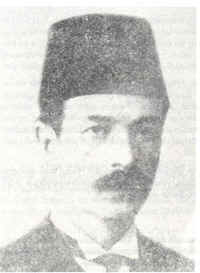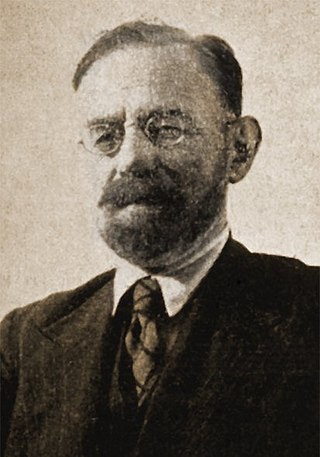
Ankara, historically known as Ancyra and Angora, is the capital of Turkey. Located in the central part of Anatolia, the city has a population of 5.1 million in its urban center and 5.8 million in Ankara Province, making it Turkey's second-largest city after Istanbul, but first by the urban area (4,130 km2).

The Mevlevi Order or Mawlawiyya is a Sufi order that originated in Konya, Turkey and which was founded by the followers of Jalaluddin Muhammad Balkhi Rumi, a 13th-century Persian poet, Sufi mystic, and theologian. The Mevlevis are also known as the "whirling dervishes" due to their famous practice of whirling while performing dhikr. Dervish is a common term for an initiate of the Sufi path; whirling is part of the formal sema ceremony and the participants are properly known as semazens.
The Turkish makam is a system of melody types used in Turkish classical music and Turkish folk music. It provides a complex set of rules for composing and performance. Each makam specifies a unique intervalic structure and melodic development (seyir). Whether a fixed composition or a spontaneous composition, all attempt to follow the melody type. The rhythmic counterpart of makam in Turkish music is usul.

Sivas is a city in central Turkey. It is the seat of Sivas Province and Sivas District. Its population is 365,274 (2022).

Ottoman music or Turkish classical music is the tradition of classical music originating in the Ottoman Empire. Developed in the palace, major Ottoman cities, and Sufi lodges, it traditionally features a solo singer with a small to medium-sized instrumental ensemble.

Kudsi Erguner is a Turkish musician. He is considered a master of traditional Mevlevi Sufi music and is one of the best-known players of the Turkish ney flute.
In Ottoman classical music, usul is an underlying rhythmic cycle that complements the melodic rhythm and sometimes helps shape the overall structure of a composition. An usul can be as short as two beats or as long as 128 beats. Usul is often translated as "meter", but usul and meter are not exactly the same. Both are repeating rhythmic patterns with more or less complex inner structures of beats of differing duration and weight. But a student learning Turkish music in the traditional meşk system first memorizes the usul kinetically by striking the knees with the hands. The student then sings the vocal or instrumental composition while performing the underlying usul. This pedagogical system helps the student memorize the composition while internalizing the underlying rhythmic structure.

Tevfik Kolaylı, better known by his pen name Neyzen Tevfik, was a Turkish poet, satirist, and neyzen. He was born in Bodrum and died in Istanbul. His name is occasionally misspelled as Neyzen Teyfik. In addition to his satire books, he is also known as the composer of various taksims and saz semais. He used his satire against tyranny during the Ottoman period and against those who opposed revolutions during the Republic years; He wrote poems against injustice, corruption, and corruption. He was arrested many times but was released after a short time. He belonged to the Bektashi Lodge and spent most of his life in various inns in Istanbul. In his last years, he stayed in the 21st ward reserved for himself at Bakırköy Mental Hospital. He did not have a regular income, other than the monthly pension he received for a short time in the 1930s, and he struggled with epileptic seizures throughout his life. It is also known that he drinks a lot of alcohol, especially Rakı.
Neşāṭī (نشاطى;?–1674) was the pen name of an Ottoman poet. He was a Sufi, or Islamic mystic, of the Mevlevi Order, and his poetry is often considered exemplary of the "Indian style" of Ottoman poetry, a movement which flourished beginning in the 17th century.

Tanburi Cemil Bey was an Ottoman tanbur, Turkish tambur, yaylı tambur, kemençe, and lavta virtuoso and composer, who has greatly contributed to the taksim genre in Ottoman classical music. His son, Mesut Cemil Bey, was an equally renowned Turkish tambur virtuoso.
Peşrev or Peshrev is an instrumental form in Ottoman music. It is the name of the first piece of music played during a group performance called a fasıl. It also serves as the penultimate piece of the Mevlevi ayini, ritual music of the Mevlevi Order, under the name son peşrev, preceding son semai. It usually uses long rhythm cycles, stretching over many measures as opposed to the simpler usul the other major form of instrumental music uses, saz semai.

The Mevlâna Museum, in Konya, Turkey, started life as the dervish lodge (Tekke) of the Mevlevi order, better known as the whirling dervishes. It houses the mausoleum of Jalal ad-Din Muhammad Rumi, a Persian Sufi mystic.
The fasıl is a suite in Ottoman classical music. It is similar to the Arabic nawba and waslah.
Aydın Sayılı was a prominent Turkish historian of science. Sayılı's portrait is depicted on the reverse of the Turkish 5 lira banknote issued in 2009. He was the first PhD recipient in the world in the field of the history of science.
There are three types of prison in Turkey: closed, semi-open, and open. A further distinction is made between ordinary closed prisons and high-security prisons. Many prisons have separate blocks for women and some also for children (juveniles), but there are also some prisons which are exclusively for women or children. Prisoners in Turkey must be divided, as per law, into remand prisoners and convicted prisoners. In practice, they are held in the same wards and cells.

"İstiklâl Marşı" is the national anthem of both the Republic of Turkey and the Turkish Republic of Northern Cyprus. It was officially adopted by the Grand National Assembly on 12 March 1921—two-and-a-half years before the 29 October 1923 establishment of the nation—both as a motivational musical saga for the troops fighting in the Turkish War of Independence, and as an aspirational anthem for a Republic that was yet to be established.

Mehmet Ali Sanlıkol is a Grammy nominated Turkish-American composer and CMES Harvard University fellow (2013-15) who is a jazz pianist and singer that also performs a number of Near and Middle Eastern instruments as well as the keyboardless synthesizer Continuum Fingerboard and the SANLIKOL Renaissance 17, a digital microtonal keyboard designed and conceived by himself.

Mehmet Suphi Ezgi was an Ottoman-born Turkish military physician who specialized in neurology, and a musician, musicologist and composer. He is best known for his studies of Ottoman classical music.

Gulçin Yahya Kaçar is a Turkish musician, Oud master, composer, singer, and academic.













